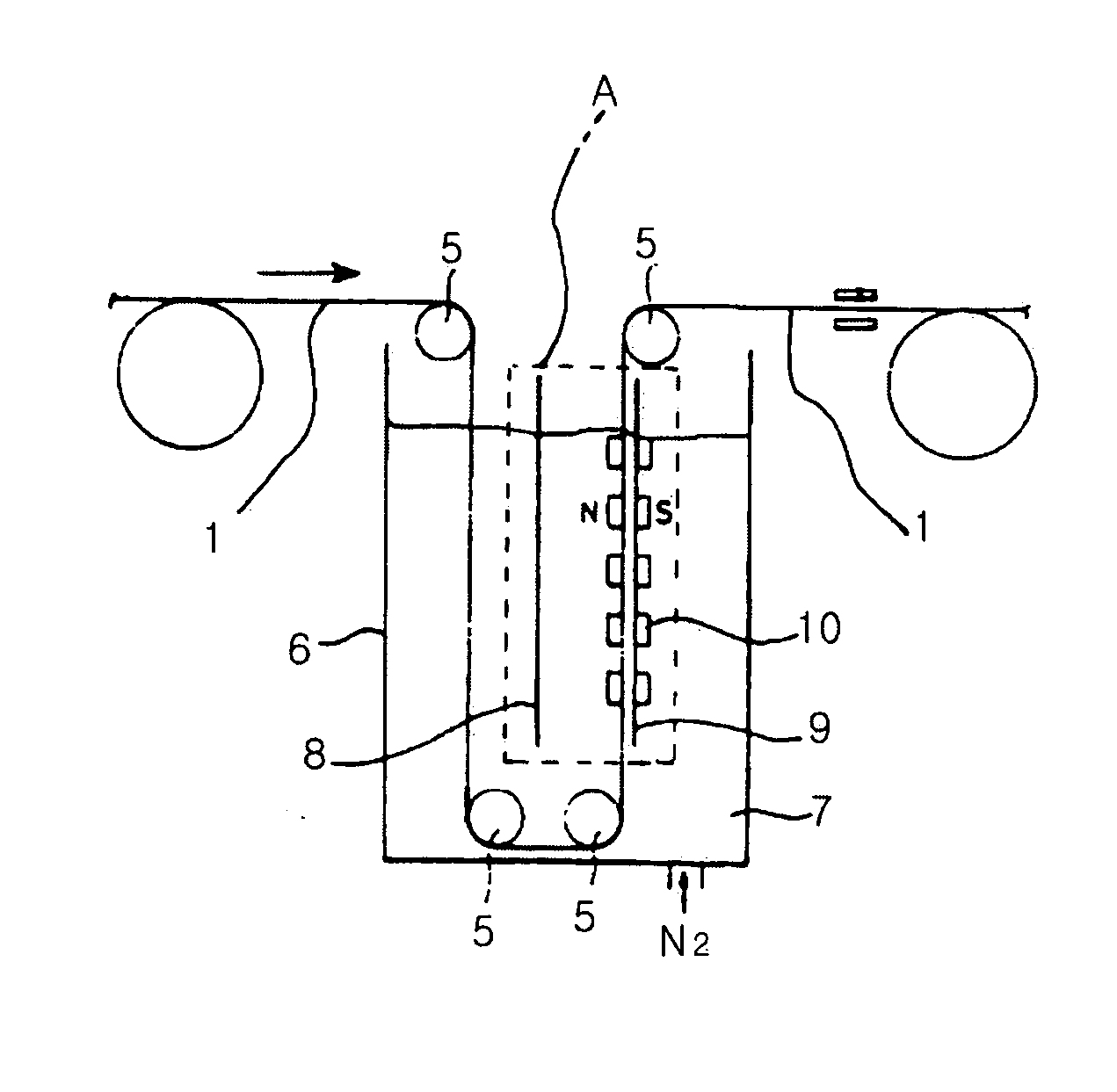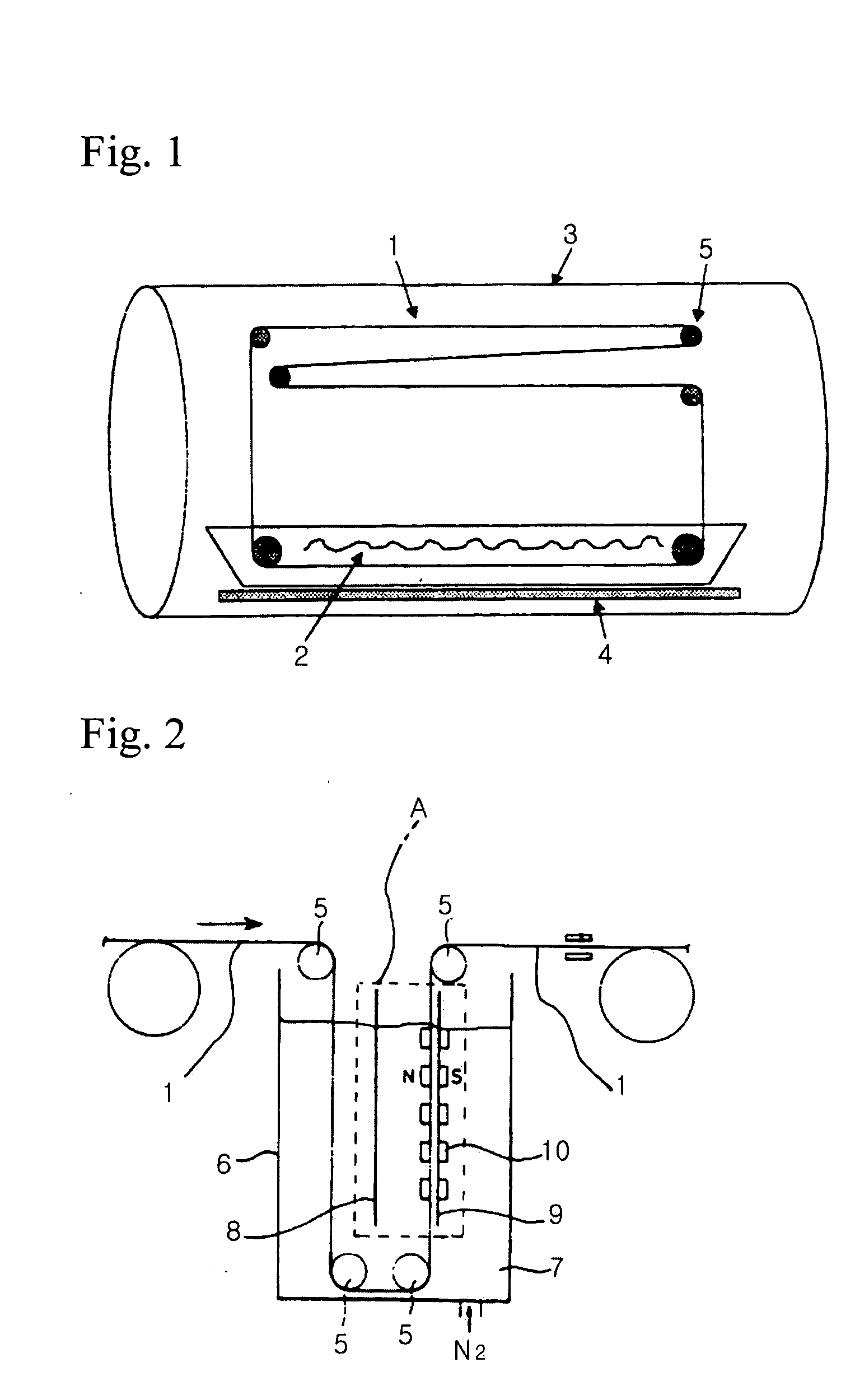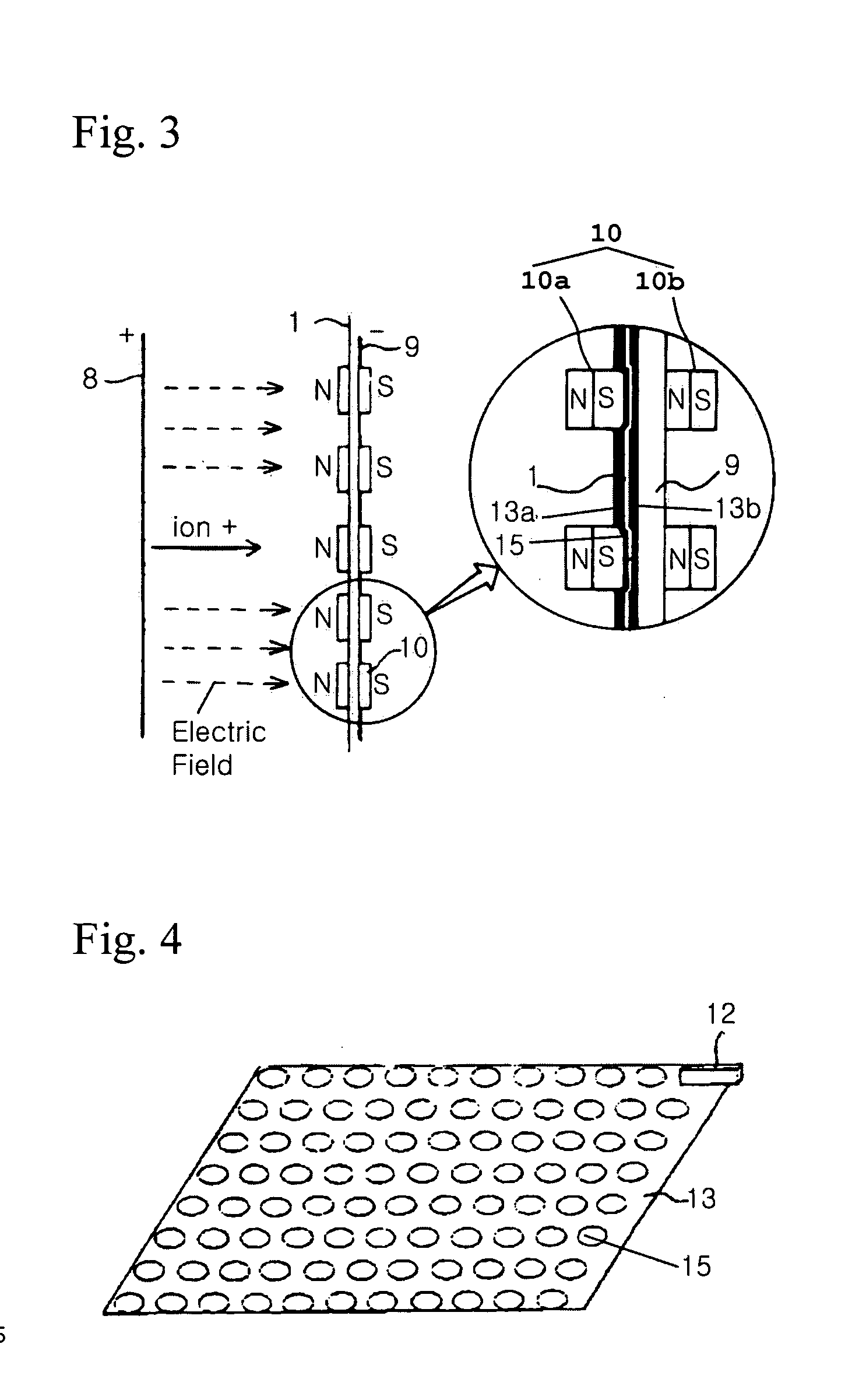Method for manufacturing heating pad using electrically conductive polymer
a technology of electrically conductive polymer and heating pad, which is applied in the direction of electrolytic organic production, non-metal conductors, organic conductors, etc., can solve the problems of shivering and hypoxia of patients, difficult control of body temperature of patients just underwent surgical operations, and inability to meet the needs of patients, so as to achieve the effect of safe heat generation
- Summary
- Abstract
- Description
- Claims
- Application Information
AI Technical Summary
Benefits of technology
Problems solved by technology
Method used
Image
Examples
example
[0018] (1) Chemical Polymerization Process
[0019] With reference to FIG. 1, there is a high-temperature, high-pressure system 3 in which chemical polymerization is conducted in accordance with an embodiment of the present invention. As illustrated in FIG. 1, a cloth 1, which is used as a substrate for the heating pad of the present invention, is repeatedly passed through a bath 2 containing dopants, distilled polymerizable monomers and an oxidizer while a chemical polymerization reaction occurs in the bath 2. To facilitate the chemical polymerization, the bath 2 is heated by a heater 4. During the chemical polymerization, the system 3 is maintained at about 50-150° C. under a pressure of 1-3 kgf / cm2 for 3-100 min. The reason why such high temperature and pressure conditions are adopted is that, as in a dyeing process, the electrically conductive polymers obtained are forced to more actively impregnate into the cloth fibers under the high temperature and pressure conditions than unde...
PUM
| Property | Measurement | Unit |
|---|---|---|
| Temperature | aaaaa | aaaaa |
| Pressure | aaaaa | aaaaa |
| Electrical conductivity | aaaaa | aaaaa |
Abstract
Description
Claims
Application Information
 Login to View More
Login to View More - R&D
- Intellectual Property
- Life Sciences
- Materials
- Tech Scout
- Unparalleled Data Quality
- Higher Quality Content
- 60% Fewer Hallucinations
Browse by: Latest US Patents, China's latest patents, Technical Efficacy Thesaurus, Application Domain, Technology Topic, Popular Technical Reports.
© 2025 PatSnap. All rights reserved.Legal|Privacy policy|Modern Slavery Act Transparency Statement|Sitemap|About US| Contact US: help@patsnap.com



